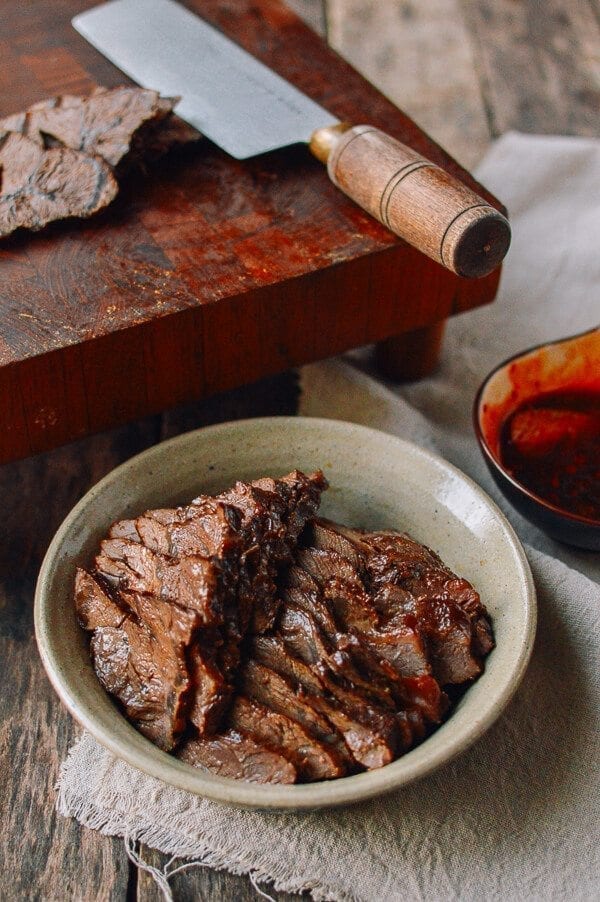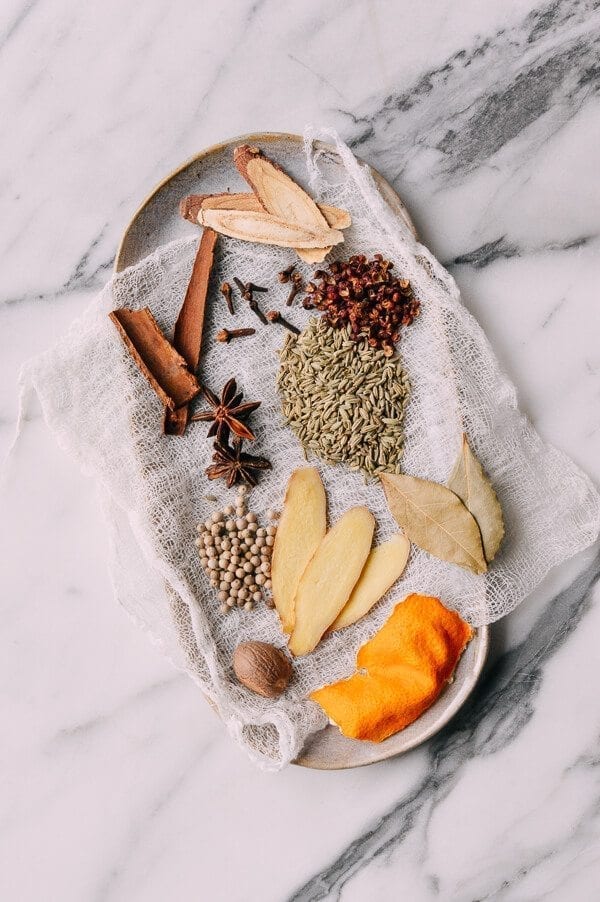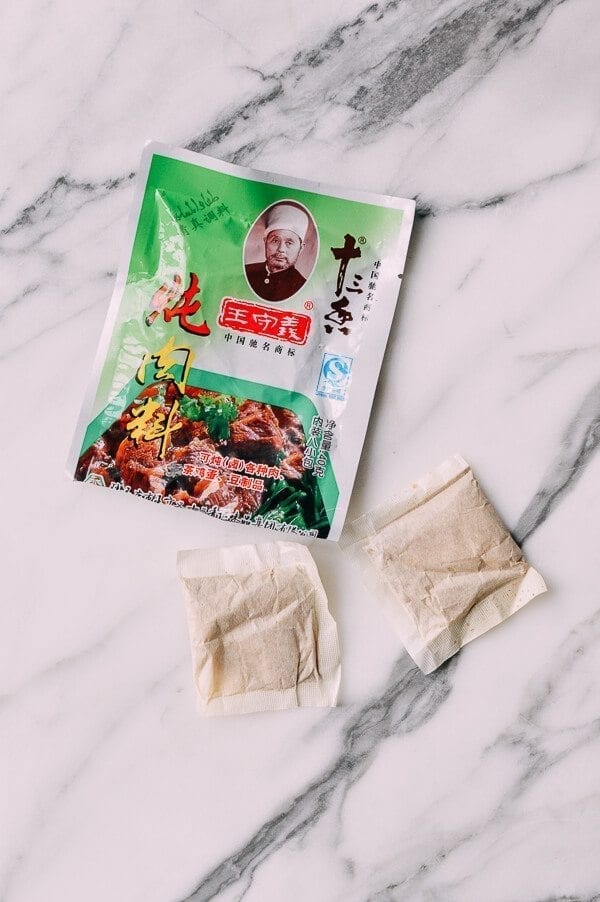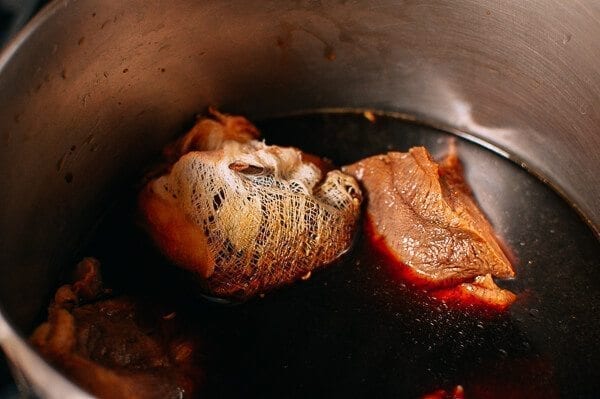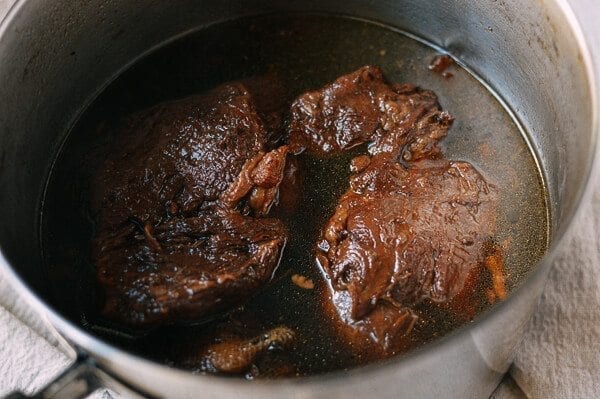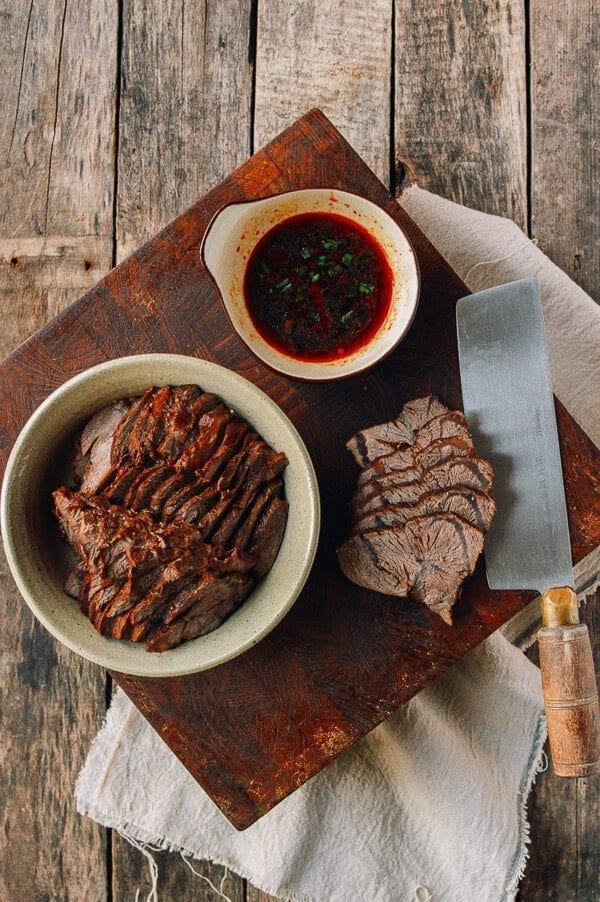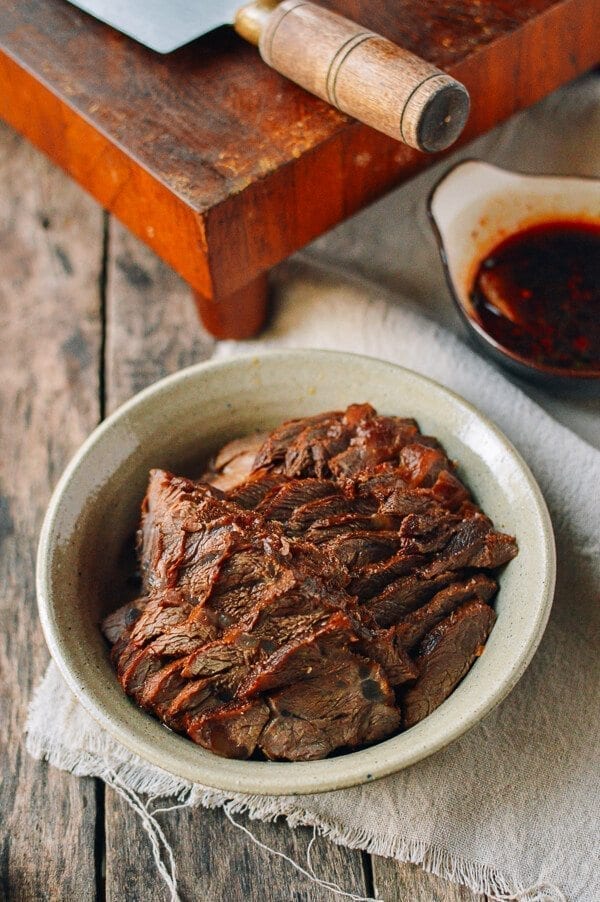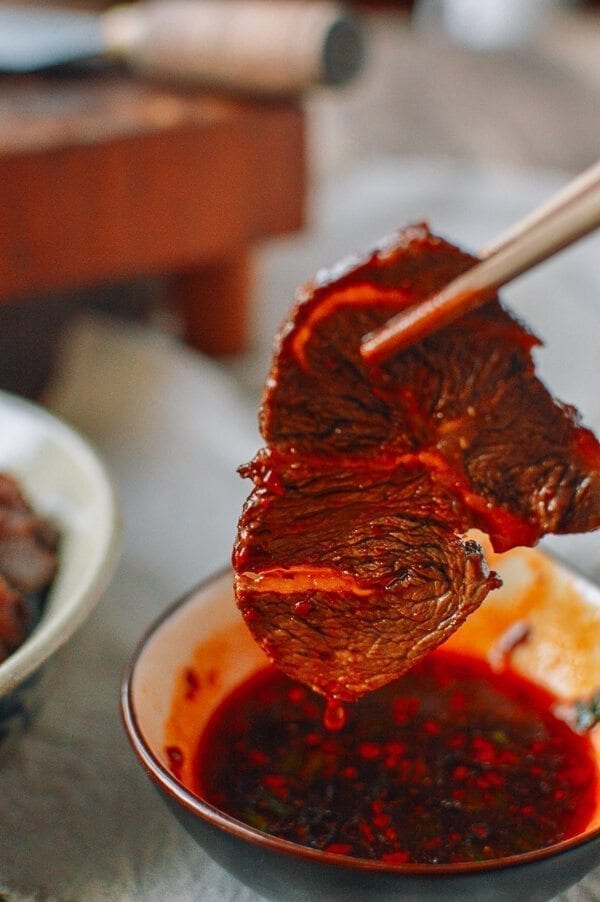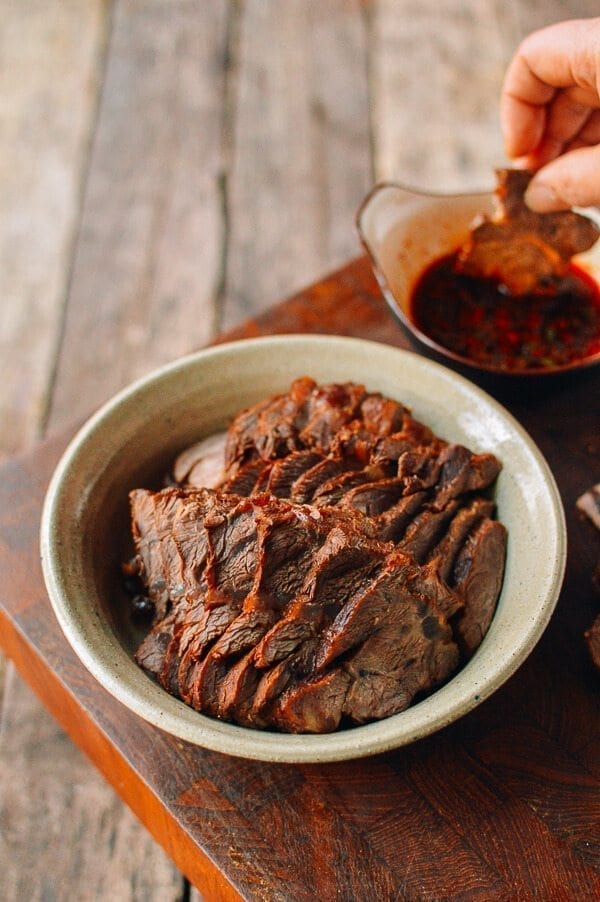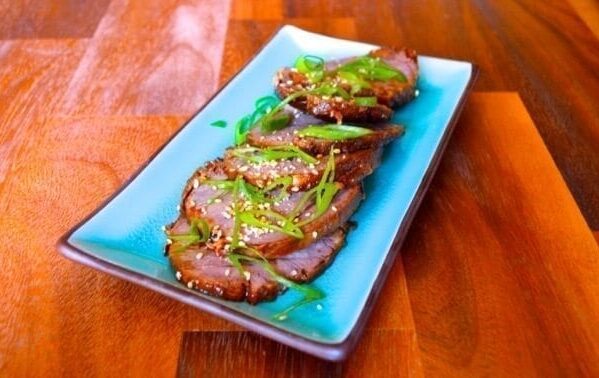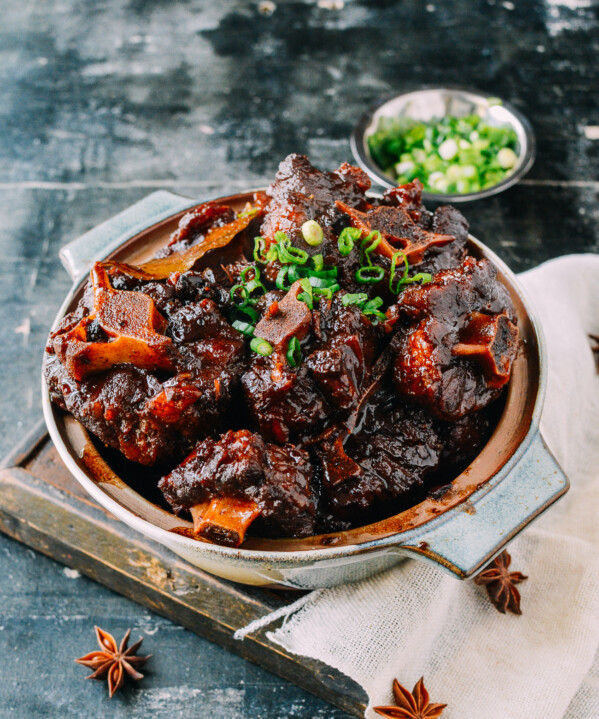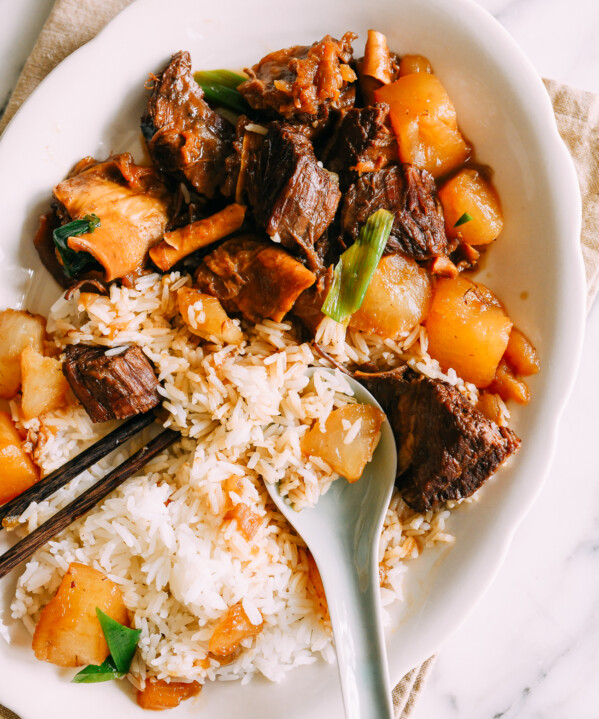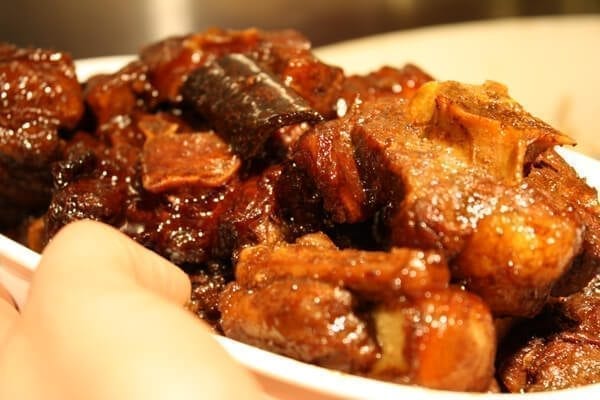This Braised Beef Shank is a dish that we’ve posted before, but we have an updated recipe for you today, plus a lot more tips and tricks to make sure it comes out right and that you’re maximizing the effort you put in!
At our house, this braised beef shank shows up on our table as a cold dish, sliced thinly, as a simple accompaniment to vegetables and rice, in noodle soups, and sometimes even for breakfast with a hot toasty piece of you tiao or scallion pancakes (good times are had by all on those days).
But as we mentioned in our old post, this is a traditional dish that’s often served as an appetizer at Chinese banquet-style dinners. It’s also a great way to make a meat dish in advance, and perfect for the Chinese style of eating where meat can be more of an accent than the main event.
A Flavorful Braising Liquid
The biggest draw of this dish is the flavorful braising liquid that results. Not only do you get the perfectly cooked braised beef shank, but you can also reuse the sauce to braise meats and vegetarian items. Here’s a handy list!
- Ideal meats to braise: beef shank, oxtails, chicken drumsticks, chicken wings, chicken gizzards, duck wings, pig’s ears and trotters, pork bones — really almost anything, but those traditionally scrapped meats are particularly transformed into luscious goodness by a trip through this braising liquid!
- Vegetarian items to braise: tofu, seaweed knots, eggs, lotus roots, bean threads, peanuts, and soybeans
If you decide to braise something other than beef shank, just be sure to adjust the cooking times accordingly. If you have any specific questions, just ask in the comments!
Recipe Notes
Here are some other things to keep in mind as you’re making this recipe:
- I know it’s challenging to get all of the dried aromatics, so I’ve marked a few of the non-essentials as “optional”
- After you’re done cooking the beef shank, you should discard the aromatic pouch, but it would be fairly tragic to throw away that sauce. Strain it through a fine mesh strainer, bring it to a boil, turn off the heat, and let cool completely before pouring the sauce into a freezer-safe container, and it should be good in the freezer for a month or two.
- When using the stored sauce, you’ll need to replenish everything (beef shank aside) by no more than half of the original recipe. It’s especially important to remember to salt it again to taste. When in doubt, less is better than more. The sauce will become richer, tastier and so much better with each usage, because the water-based sauce turns into a stock-based sauce. Of course, you can use stock instead of water to begin with!
- Don’t slice the braised beef shank until it’s completely cooled or cold. The meat will fall apart if you try to slice it when it’s still hot.
Chinese Braised Beef Shank: Recipe Instructions
First prepare a spice packet by securing all of the spices in two tea pouches or by tying them securely inside a piece of cheesecloth. That’s the Chinese cinnamon (gui pi), black cardamom pod (tsaoko), Sichuan peppercorns, star anise pods, cloves, dried tangerine peel, bay leaves, whole white (or black) peppercorns, dried licorice slices (甘草, nutmeg, and fennel seeds.
They do also sell pre-portioned packets of Chinese spices for just this purpose, but I like to put together my own.
Next, cut your beef shank into cross sections—2 to 3 equal pieces about 5-6” long. Put the beef shank and ginger into a medium pot, and fill it with enough water to cover the beef. Bring it to a boil, until you see a layer of grayish film forming on the water’s surface. Shut off the heat and pour everything into a colander in the sink. Rinse the beef clean, and wash the pot clean.
Put the beef back into the pot, and add the spice pouch, Shaoxing wine, garlic, scallions (I forgot to add this when I made it, but that doesn’t mean you have to, too!), rock sugar, light soy sauce, dark soy sauce, and 4 cups water or stock (it must be enough to cover the beef). Also add salt to taste.
Bring everything to a boil, then turn the heat down to a very slow simmer. Let it simmer for 60 to 90 minutes until fork tender.
Try not to overcook the beef, so it doesn’t lose its texture. Take the beef out, and store it, covered, to cool completely before slicing.
Alternatively, after the braising liquid is cooled completely, you can put the beef back in and let it soak in the sauce in the refrigerator overnight to intensify the flavors.
To serve, you can add the sliced braised beef shank to noodle soup, or serve plain with some rice and a vegetable on the side. We also like to make a simple dipping sauce of soy sauce, chili oil, and chopped scallions.
Chinese Spiced Braised Beef Shank
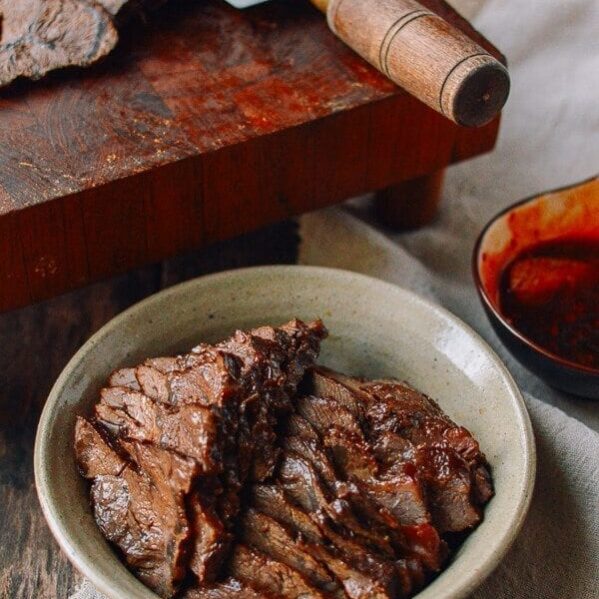
Ingredients
- 2 cinnamon sticks
- 1 black cardamom pod
- ½ tablespoon Sichuan peppercorns
- 2 star anise
- 8 cloves
- 1 piece dried tangerine peel
- 2 bay leaves
- 1 teaspoon white or black peppercorns
- 3 dried liquorice slices (甘草 - optional)
- 1 whole nutmeg (optional)
- 1 tablespoon fennel seeds (optional)
- 2½ pounds beef shank (1.1 kg)
- 3 slices ginger
- ¼ cup Shaoxing wine
- 5 cloves garlic
- 4 scallions (cut into large pieces)
- 15 grams rock sugar (can substitute with regular granulated sugar)
- ¼ cup light soy sauce
- 2 tablespoons dark soy sauce
- About 4 cups water (or optionally, chicken, beef, or pork stock, enough to cover the beef)
- Salt (to taste, we used about 1 teaspoon)
Instructions
- First prepare a spice packet by securing all of the spices in two tea pouches or by tying them securely inside a piece of cheesecloth. That’s the cinnamon, cardamom pod, Sichuan peppercorns, star anise pods, cloves, dried tangerine peel, bay leaves, whole white peppercorns, dried liquorice slices, nutmeg, and fennel seeds.
- Next, cut your beef shank into cross sections––2 to 3 equal pieces about 5-6” long. Put the beef shank and ginger into a medium pot, and fill it with enough water to cover the beef. Bring it to a boil, until you see a layer of grayish film forming on the water’s surface. Shut off the heat and pour everything into a colander in the sink. Rinse the beef clean, and wash the pot clean.
- Put the beef back into the pot, and add the spice pouch, Shaoxing wine, garlic, scallions (I forgot to add this when I made it, but that doesn’t mean you have to, too!), rock sugar, light soy sauce, dark soy sauce, and 4 cups water or stock (it must be enough to cover the beef). Also add salt to taste.
- Bring everything to a boil, then turn the heat down to a very slow simmer. Let it simmer for 60 to 90 minutes until fork tender.
- Try not to overcook the beef, so it doesn’t lose its texture. Take the beef out, and store it, covered, to cool completely before slicing.
- Alternatively, after the braising liquid is cooled completely, you can put the beef back in and let it soak in the sauce in the refrigerator overnight to intensify the flavors.
nutrition facts
